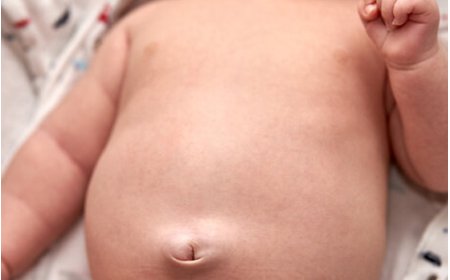Cystic Hygroma

Introduction :
Cystic Hygroma is a medical condition that affects some children in India. It may sound like a big, complicated word, but don't worry! In this article, we'll explain what Cystic Hygroma is, its symptoms, causes, types, diagnostic tests, treatments, complications, and ways to prevent it, all in simple language that any 10-year-old can easily understand.
Signs and Symptoms:
Cystic Hygroma is a kind of growth that usually appears on the neck or head of a baby. Some common signs and symptoms include:
- A soft, fluid-filled lump that looks like a bubble under the skin.
- The lump can grow big and may make it difficult for the baby to eat or breathe.
What is Cystic Hygroma? :
Cystic Hygroma is a non-cancerous growth that happens when some parts of the body, like the neck, have abnormal fluid-filled sacs. These sacs can be tiny like a pea or as big as a lemon.
How Is Cystic Hygroma Classified? :
Cystic Hygroma can be classified based on its size and location. Doctors use this classification to understand the severity and plan the treatment.
Causes and Triggers:
The exact reasons why some babies develop Cystic Hygroma are not always clear, but it can happen when certain things go wrong during the baby's development in the mother's womb. It is not something that the baby or the parents do to cause it. It's just something that can happen sometimes.
Risk Factors with Examples:
Certain factors can increase the chances of a baby having Cystic Hygroma. For example:
- If the baby has certain genetic conditions or syndromes, it can increase the risk.
- Sometimes, Cystic Hygroma can be seen more commonly in babies whose mothers were exposed to certain infections during pregnancy.
Types of Cystic Hygroma:
There are two main types of Cystic Hygroma:
- Microcystic: This type has small fluid-filled sacs.
- Macrocystic: This type has large fluid-filled sacs.
Diagnostic Tests and Their Use:
Doctors use different tests to diagnose Cystic Hygroma and understand its type and size. Some common tests are:
- Ultrasound: This is a painless test that uses sound waves to create pictures of the baby's neck and head. It helps the doctors see the Cystic Hygroma.
- MRI (Magnetic Resonance Imaging): This test uses powerful magnets and radio waves to create detailed images, helping doctors to understand the growth better.
Treatments:
The treatment of Cystic Hygroma depends on its size and location. Some common treatments are:
- Monitoring: Sometimes, doctors may choose to observe the growth and see if it gets better on its own.
- Surgery: If the Cystic Hygroma is big and causing problems, the doctors may perform surgery to remove it.
Complications of Cystic Hygroma:
Cystic Hygroma can lead to some complications like:
- Difficulty in breathing or eating due to the growth's size and location.
- Infections in the affected area.
Prevention Techniques:
Unfortunately, there are no specific ways to prevent Cystic Hygroma since its exact causes are not always clear. However, taking good care of a pregnant mother's health and getting regular prenatal check-ups can help in detecting any issues early on.
Remember, Cystic Hygroma is a medical condition that can be treated with the help of doctors and medical experts. If you or someone you know has this condition, it's essential to talk to a healthcare professional to get the right advice and treatment.
What's Your Reaction?
 Like
0
Like
0
 Dislike
0
Dislike
0
 Love
0
Love
0
 Funny
0
Funny
0
 Angry
0
Angry
0
 Sad
0
Sad
0
 Wow
0
Wow
0






































































